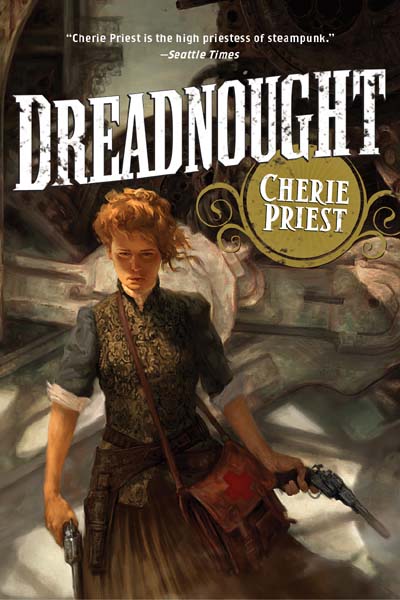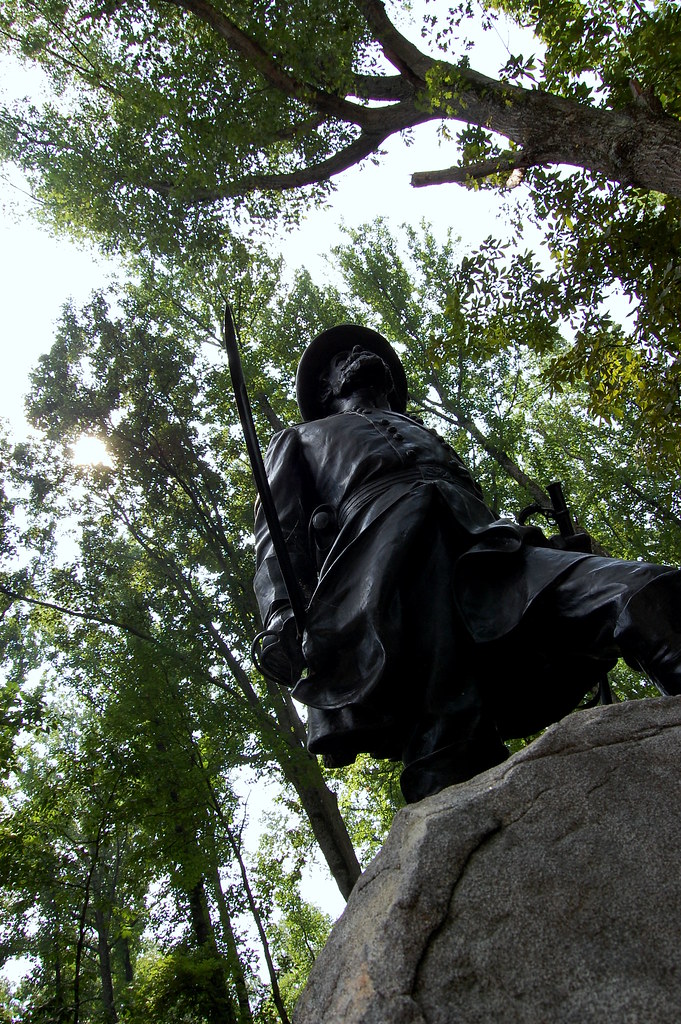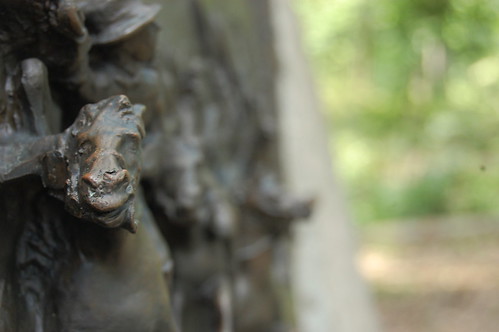Complicated History
/
A couple of months ago, I went to the Sullivan Museum and History Museum at Norwich University for a talk by one of the history professors, Dr. Steven Sodergren, as part of an exhibit series on the Civil War. His talk was about the specific motivations for individuals on each side of the Civil War, refuting the idea that there was a uniform block of support behind both the Union and Confederate governments. Some Southern states, when the decision came to vote on the decision to split from the United States, had a close majority: no more than 55-60% of the population supporting the idea, leaving a substantial chunk in opposition.
The idea behind the talk was a sound one, taking on the idea of the very nature of taught history: it's not as simple as it's made out to be. History is a difficult topic to convey to a large audience: big, complicated and multi-facetted, the very instruction of the field is just as enlightening as a separate topic. The Civil War was never quite as clear cut when it came to the motivations of the soldiers on the field: according to Sodergren, it was a deeply personal and difficult choice for everyone who took up arms. More recently, a talk on VPR with Vermont Historian Howard Coffin noted that looking at enlistment numbers is important: high initially, support dropped off following the first major battles when bodies began to return home.
I recently presented a paper at the New England Historical Association, where I talked about Norwich University's efforts during the Battle of the Bulge. My panel's commentator noted that between the papers, there's a high level view of history, with the strategy and big decisions, and the ground level, with the individual soldiers fighting: my paper bridged the gap, telling the story of the Bulge through the soldiers who fought there, but also how their actions played into a much larger story. Their own actions were far from singular: they spanned the entire command structure, from a Private First Class to a Major General. In our continued study of Norwich History, my wife and I have found soldiers who enlisted in foreign militaries prior to the United States' entry into the Second World War, while others were drafted.
A recent article by Slate Magazine caught my eye: How Space-Age Nostalgia Hobbles Our Future: Contrary to popular belief, public support for space exploration in the 1960s was far from universal. It's an interesting read, presenting a very contrary view to the supposed popularity of the Apollo program during the 1960s-1970s. Far from the major popular support that we perceive, the public approval rating for the program only hit a majority around the time that Neil Armstrong and Buzz Aldrin landed on the moon, and individual accounts from around the country shows that there was a wide range of opinions as to the value of the program. Support for the space programs also varied wildly depending on age group, and undoubtedly, on location as well.
Looking at political records from the time, there's also an important story when it comes to how Congress approved wartime funding: the public easily remembers President John F. Kennedy's speech at Rice University. The reality of actually funding the space program is far more complicated, with competing national priorities. Even Kennedy's speech, while influential, isn't so clear cut: it was designed in the aftermath of the failed Bay of Pigs Invasion, and was issued to help divert attention away from the administration's blunder.
A book that I particularly detest is Victor David Hanson's Carnage and Culture: Landmark Battles in the Rise of Western Power, an enormously popular and reviled book on the nature of culture and war: he outlines that the very nature of democracy makes a standing military inherently stronger, because the individual soldiers have a stake in their government and by extension, their destiny. It's a very appealing, straight-cut assumption, and one that breaks down when one considers the enormous complexity inherent in a democratic nation: no sane person makes the decision to take up arms for their country lightly, and Hanson's text does a disservice to the historical community by overly simplifying a situation that shouldn't be simplified.
In a lot of ways, this falls under the same public mentality that spawned the Greatest Generation from the Second World War and the Lost Cause line of thinking from the Civil War. Looking even further back into our nation's history, the War for Independence was likewise far from universally supported! Another specific example from one of my instructor's talks was the Boston Tea Party: essentially a rebranded name in an age of nostalgia to smooth over the fact that the 'Destruction of the Tea' was committed by political radicals.
I often wonder as I hear political reminiscing about the space age or the greatest generation or of Lincoln's efforts, whether people throughout the ages understand that the rosy memories upon which we build the future on is really nothing more than a shared fabrication, and why we reject the complicated story for something that has been watered down to the point that it's contrary to the original message.
History is our most wonderful, complicated Mandelbrot set that continues to bring out new levels and stories. Dr. Sodergren's talk highlighted a key point in how we approach history: it becomes defined by its major outcomes, as opposed to the actions that lead up to them, and increasingly, it feels as though the lessons that we can learn are missed, overlooked or simply ignored.
Who knows, though? Maybe we need the simple stories.

 I've sold a new article to the Norwich Record, titled Out of the Ashes: How an Irish Episcopal Priest Saved Norwich University. This was one of the projects that I was working on last fall, and shortly after the start of the New Year, I submitted my final draft. The research phase was interesting: going through archives and piecing together a rather interesting and diverse man that was a central, but forgotten figure in Norwich University and local Vermont history.
I've sold a new article to the Norwich Record, titled Out of the Ashes: How an Irish Episcopal Priest Saved Norwich University. This was one of the projects that I was working on last fall, and shortly after the start of the New Year, I submitted my final draft. The research phase was interesting: going through archives and piecing together a rather interesting and diverse man that was a central, but forgotten figure in Norwich University and local Vermont history. It’s hard to mention the term Steampunk without also mentioning Cherie Priest’s Clockwork Century series, an alternate history of the United States, featuring all of the bells and whistles that comes with the territory. The first novel, Boneshaker, was well received, as was the short novella, Clementine, set shortly after the events of the first book, while the latest entry in the series (there are two more planned), Dreadnought, picks up the story across the country and helps to flesh out Priest’s strange alternate world. An interesting follow-up to Boneshaker, Dreadnought never quite reaches the same heights that its predecessor reached, nor does it quite feel as unique. As such, Priest brings out new elements to the Civil War only hinted at in the previous books, and tells a fun story, one that is sure to be popular with the steampunk crowd.
It’s hard to mention the term Steampunk without also mentioning Cherie Priest’s Clockwork Century series, an alternate history of the United States, featuring all of the bells and whistles that comes with the territory. The first novel, Boneshaker, was well received, as was the short novella, Clementine, set shortly after the events of the first book, while the latest entry in the series (there are two more planned), Dreadnought, picks up the story across the country and helps to flesh out Priest’s strange alternate world. An interesting follow-up to Boneshaker, Dreadnought never quite reaches the same heights that its predecessor reached, nor does it quite feel as unique. As such, Priest brings out new elements to the Civil War only hinted at in the previous books, and tells a fun story, one that is sure to be popular with the steampunk crowd.


